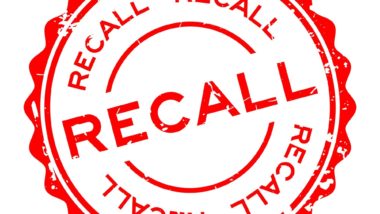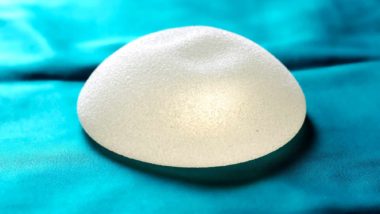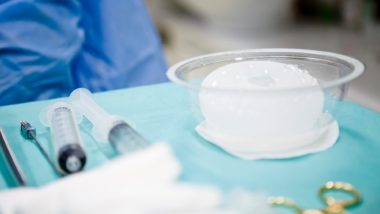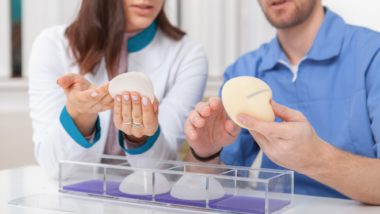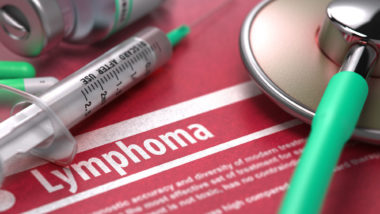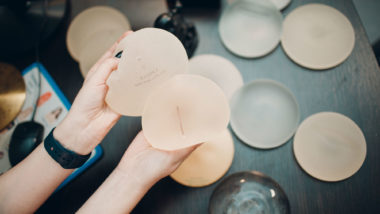Top Class Actions’s website and social media posts use affiliate links. If you make a purchase using such links, we may receive a commission, but it will not result in any additional charges to you. Please review our Affiliate Link Disclosure for more information.
At some time in our lives, most of us experience red marks on the skin, fevers, fluctuations in weight, or pain. These are symptoms of common illnesses or injuries. But they can also be among the early indicators of complications from surgery, like anaplastic large cell lymphoma – a breast implant-caused cancer.
What Is Anaplastic Large Cell Lymphoma?
Anaplastic large cell lymphoma, or ALCL, is a rare type of non-Hodgkin’s lymphoma. Lymphoma is a cancer of the lymphatic system, a key component in the human body’s immune system.
Non-Hodgkin’s lymphoma involves the abnormal growth of one of two types of white blood cells the body produces to fight off infection — T cells and B cells. ALCL is considered an aggressive cancer type typically involving T-cells, according to the National Institutes of Health.
Instances of ALCL account for roughly 1% of all non-Hodgkin’s lymphoma cases and about 16% of T cell cancers.
There are four kinds of anaplastic large cell lymphoma. One is superficial, affecting the skin. Two others are systemic: ALK-positive and ALK-negative. ALK-positive ALCL is more prevalent in children and young adults while ALK-negative ALCL is found more in older adults. Lastly, there is breast implant-associated anaplastic large cell lymphoma (BIA-ALCL).
What Are the Symptoms of Anaplastic Large Cell Lymphoma?
Anaplastic large cell lymphoma typically manifests on the skin or in the lymph nodes or organs, depending on which form of the disease is present.
Cutaneous ALCL will first appear as solitary or multiple raised, red skin lesions that eventually ulcerate, meaning they break open and do not heal, and might itch, the Lymphoma Research Foundation says.
The most common symptoms of systemic ALCL include fever, night sweats, and weight loss.
When it comes to breast implant-related anaplastic large cell lymphoma, the most common symptoms are persistent swelling or fluid accumulation in the capsule around an implant, lumps or other changes in the shape or size of the breast, redness, and pain. Symptoms usually emerge long after the implants have been placed – at least two years. According to Cleveland Clinic, eight years is the average length of time it takes for BIA-ALCL symptoms to appear.
How Is Anaplastic Large Cell Lymphoma Diagnosed?
The initial symptoms of anaplastic large cell lymphoma are a key element of how the disease may be diagnosed. A doctor diagnosing ALCL may ask if a patient is experiencing any symptoms like those mentioned above. Additionally, they may ask when the symptoms began. They may ask if a patient is experiencing pain, and if so, where the pain is located. These factors can be used to rule out other possible causes of the symptoms.
If a physician determines that a patient’s symptoms do point to ALCL, they may take a biopsy from a lymph node. This process may require removing the whole lymph node, but in some cases, just a piece may be removed. The biopsy may be done by making a cut in the skin to remove a lymph node sample. In some cases, the procedure may be done with the use of a needle.
Happily, a lymph node biopsy is usually an outpatient procedure. After the sample is removed, it is then examined under a microscope. Under the microscope, a medical professional can look for the presence of cancer cells.
Blood tests are not usually done to diagnose ALCL initially, though they may be employed later on in a patient’s treatment. Blood tests are used to gain more insight into an ALCL patient’s condition — they can help a physician determine if the disease has spread into other parts of the body, and to tell how serious the condition is. Tests other than blood tests may also be performed, including bone marrow biopsies, CT scans, and others.
What Is the Anaplastic Large Cell Lymphoma Survival Rate?
The five-year survival rate for patients with the surface form of ALCL, found at the skin or cutaneous level, is very high, about 90%, according to Medscape. In some cases, the disease can regress without any treatment.
Among the systemic forms of anaplastic large cell lymphoma, patients with ALK-positive ALCL are usually treated with standard chemotherapy, which typically succeeds in putting the disease into long-term remission, the Lymphoma Research Foundation says.
The five-year survival rate in that category of the disease is 70% to 80%, Medscape reports.
Patients with ALK-negative ALCL typically respond well to standard treatment initially, but the lymphoma is more likely to recur within five years. For that reason, the Lymphoma Research Foundation says some people are treated with more aggressive therapies, including stem cell transplants. The five-year survival rate among patients with ALK-negative anaplastic large cell lymphoma is 5% to 15%, notes Medscape.
According to Medscape, the American Society of Plastic Surgeons is aware of 688 diagnosed cases of breast implant-associated anaplastic large cell lymphoma worldwide. Seventeen deaths have been reported, making BIA ALCL’s survival rate about 97%.
What Is the Link Between Anaplastic Large Cell Lymphoma and Breast Implants?
Breast implant-associated anaplastic large cell lymphoma is a cancer of the immune system, not the breast. It is very rare. While an estimated 10 to 11 million women worldwide have gotten breast implants, fewer than 10 patients a year are diagnosed with the disease, according to the U.S. Food and Drug Administration (FDA).
Most cases of BIA-ALCL occur in patients with textured implants, which may cause more inflammation of the surrounding tissue than smooth implants, according to the Cleveland Clinic. Whether the implants are filled with saline or silicone does not seem to matter.
Cleveland Clinic notes factors that may contribute to BIA-ALCL include allergies, reactions to implant materials, reactions to bacteria that grow on the surface of the implant, and genetics.
FDA Releases New Report on Anaplastic Large Cell Lymphoma
The Food and Drug Administration has reportedly published new information about anaplastic large cell lymphoma and other side effects of breast implants. According to the Fierce Biotech website, there were an additional 160 cases of the illness and three deaths reported between July 7, 2019 and Jan. 5, 2020 noted by the federal agency.
“While the FDA doesn’t have definitive evidence demonstrating breast implants cause these symptoms, the current evidence supports that some patients experience systemic symptoms that may resolve when their breast implants are removed,” stated the agency when it released its report.
The total number of cases reported to the agency is now over 700, reports Fierce Biotech, including 36 patients who succumbed to the disease.
The FDA report also revealed that Allergan textured breast implants were involved in over 600 of those cases. Moreover, the report also indicates that incidents of breast implant illness related symptoms are on the rise. According to data compiled by the agency, approximately 2,500 cases were reported in a single year.
“The FDA has been diligently monitoring adverse events associated with breast implants for decades and has been working to better understand the quality of life and satisfaction a breast reconstruction patient may experience in order to refine our evaluation of breast implant benefits and risks,” an FDA spokesperson stated.
The reported increase in the rate of new reports is a “steep jump,” according to Fierce Biotech, which notes that previously, only 1,080 reports of BIA-ALCL were made between 2008 and 2018.
 What Treatment Options Are Available?
What Treatment Options Are Available?
Diagnosing anaplastic large cell lymphoma requires medical testing, and may include blood tests, a CT scan, a PET scan, an MRI scan, a biopsy of the patient’s skin or internal tissues, or a bone marrow biopsy. Once diagnosed, a patient’s care team can help devise a treatment plan.
With cutaneous ALCL, if the disease is confined to a single lesion or area of the skin, it can often be treated with radiation therapy or be surgically removed, according to the Lymphoma Research Foundation. Those methods reportedly put the disease into remission about 95% of the time.
If a person has multiple lesions in multiple locations, or if already treated ALCL recurs, it’s likely medication that can travel through the bloodstream and systematically attack the disease at the cellular level will be needed. According to the Lymphoma Research Foundation, four drugs are currently approved for treatment: Bexarotene (Targretin), Brentuximab Vedotin (Adcetris), Romidepsin (Istodax) and Vorinostat (Zolinza)
Chemotherapy is the standard treatment for patients with systemic types of anaplastic large cell lymphoma. Many have been shown to respond well to standard regimens such as the commonly used combination CHOP (cyclophosphamide, doxorubicin, vincristine, and prednisone), the research foundation says. That’s especially true for those with the ALK-positive type.
Patients with ALK-negative large cell lymphoma, who are more likely to experience a relapse, are sometimes prescribed higher doses of chemotherapy and in some cases may also receive stem cell transplants.
Surgical removal of breast implants and surrounding scar tissue is the most standard treatment for patients with breast implant-associated anaplastic large cell lymphoma.
Should You File a Breast Implant Cancer Lawsuit?
When a medical product or device causes injury, such as breast implant-associated anaplastic large cell lymphoma (BIA-ALCL), consulting an attorney about your experiences can help determine if you have grounds for a legal claim.
ATTORNEY ADVERTISING
Top Class Actions is a Proud Member of the American Bar Association
LEGAL INFORMATION IS NOT LEGAL ADVICE
Top Class Actions Legal Statement
©2008 – 2024 Top Class Actions® LLC
Various Trademarks held by their respective owners
This website is not intended for viewing or usage by European Union citizens.
Get Help – It’s Free
Join a Free Breast Implants Side Effects Lawsuit Investigation
If you qualify, an attorney will contact you to discuss the details of your potential case at no charge to you.
PLEASE NOTE: If you want to participate in this investigation, it is imperative that you reply to the law firm if they call or email you. Failing to do so may result in you not getting signed up as a client or getting you dropped as a client.
E-mail any problems with this form to:
Questions@TopClassActions.com.


 What Treatment Options Are Available?
What Treatment Options Are Available?
